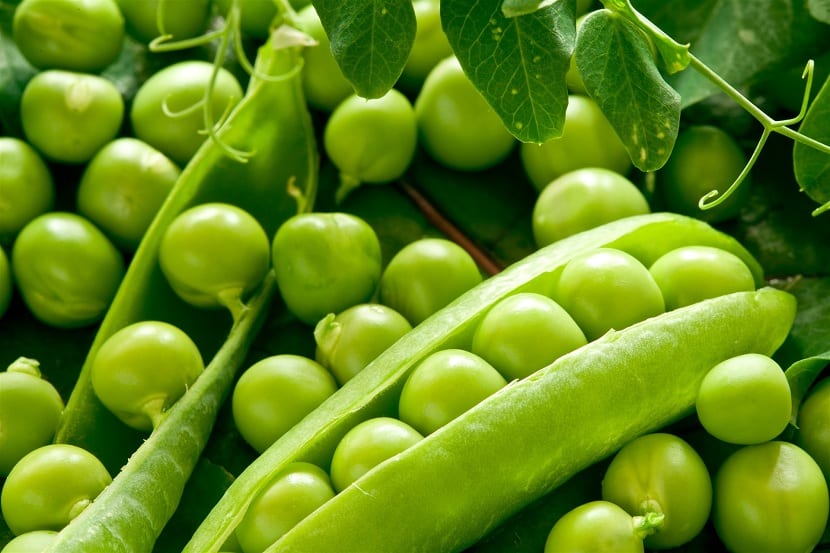
The peas They are legumes that grow in cooler climates from fall to spring. They are well known and used in gastronomy around the world. Its scientific name is Pisum sativum. They are climbing plants whose ability to fix nitrogen in the soil is spectacular. It has quite a number of nutritional and useful properties for diets rich in vegetables.
If you want to learn how to grow the pea and know all the characteristics, pests and diseases that can attack it, keep reading 🙂
Key features
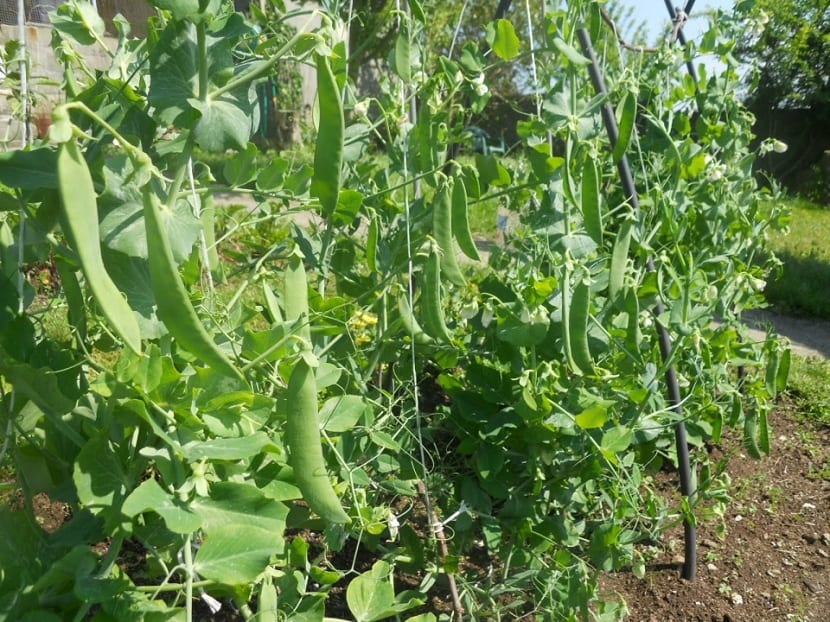
Peas can be eaten fresh in salads as well as in rice, soups, stir-fries and stews. Has great content in protein, calcium and vitamins C. It can be grown at home perfectly in a cultivating table or a home garden.
It is an annual herbaceous plant that can reach three meters in height. To harvest them properly, they are not usually allowed to grow very long. There are two varieties of peas that are frequently grown. They are those that grow little and those that spread as if it were a vine. Its root is quite developed and its stems are thin. They grow in spirals and help the surrounding plants to grasp the structures.
Its fruit is a vine of between 3,5 and 15 cm in length hanging with up to 11 round, smooth or wrinkled seeds. Peas can be green, yellow, brown, orange-red, mottled, and beige.
Pea cultivation
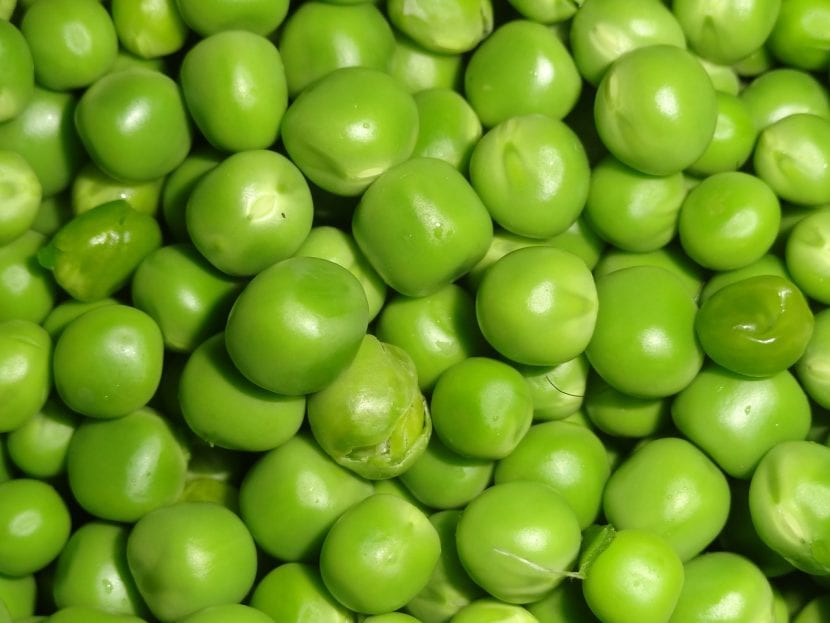
Peas need a climate with lower temperatures to thrive. The best time to grow them is late summer and early fall to be able to harvest them well in winter. Although it prefers cooler climates, it cannot withstand freezing temperatures, so we have to protect it. If the area where we are going to plant it usually has frosts, it is better to do it a month before the last frost.
This plant requires a looser type of soil, with good drainage and quality fertilizer. Compost can be used to nourish it properly. It can be sown in various ways, but it has to rspreading a minimum depth of 30 cm. The cultivation beds and containers are suitable for growing peas.
The pea seed is about half a centimeter in size and its color is usually light or dark brown. It is grown using the direct sowing technique, although it is also allowed to sow in seedbeds. To carry out the sowing, two central furrows are marked with a separation of about 15 centimeters and a depth of 2-3 cm. Next, the seeds are placed respecting a distance of about 10 cm between each one. Once in place, the furrows are covered and watered.
If we do it in a nursery, it is important that the substrate has good fertilizer and drainage to avoid flooding or lack of nutrients. We place the seed two centimeters deep to keep the area moist. The seedling should be transplanted when it reaches a height of about eight centimeters. If the roots are very coiled, we can cut them a little and place them in a zigzag.
Pea plants are very sensitive. Therefore, its collection is done with the hands so as not to damage the structure. The harvest will be staggered, so we will have several weeks of production.
Necessary care
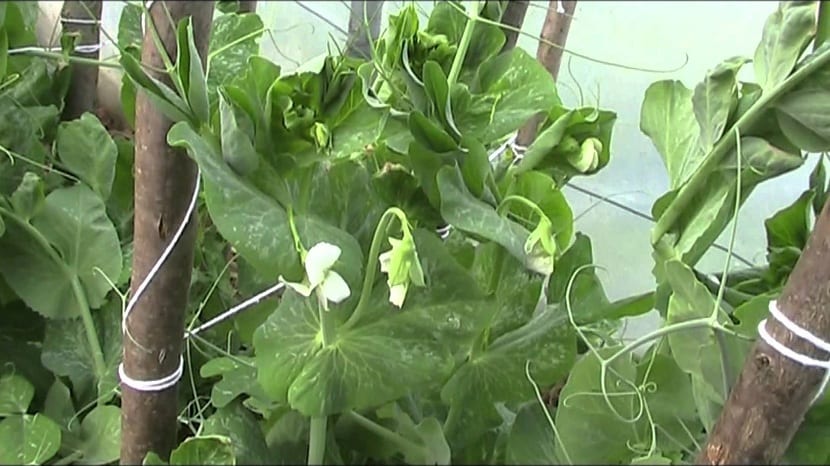
Peas need specific care to maintain all their optimal conditions. If we want to have a good result, it is advisable to soak the seeds one night before sowing them. In this way they will have a good germination.
These tips will help you keep your pea healthy and growing well:
- When the plant grows more than 15 cm, we can fasten the branches to the meshes so that the stems do not stay loose.
- We can take some bush plants to associate them with the peas and take advantage of the space.
- If we keep the soil clean without weeds, we will avoid pests or diseases.
- To keep the soil moist when the plant grows about 30 cm tall, we can use mulch or padding.
- Good surveillance is the best weapon against pests and diseases. It is better to invest in prevention than to achieve something irreplaceable.
- When it rains heavily or hail falls, it is advisable to protect them. They should be placed on a mesh or on a wall. The same when temperatures drop.
- We can associate them with other crops such as radishes, turnips, cucumber, corn and carrots. Nevertheless, it is not good to place them next to the onions, scallions and garlic.
A curiosity is that the flowers of the pea favor the attraction of insects that are beneficial for the garden.
Plagues and diseases
If not properly monitored and maintained, the pea can suffer from diseases and pests. Among these we find:
White blight and ash
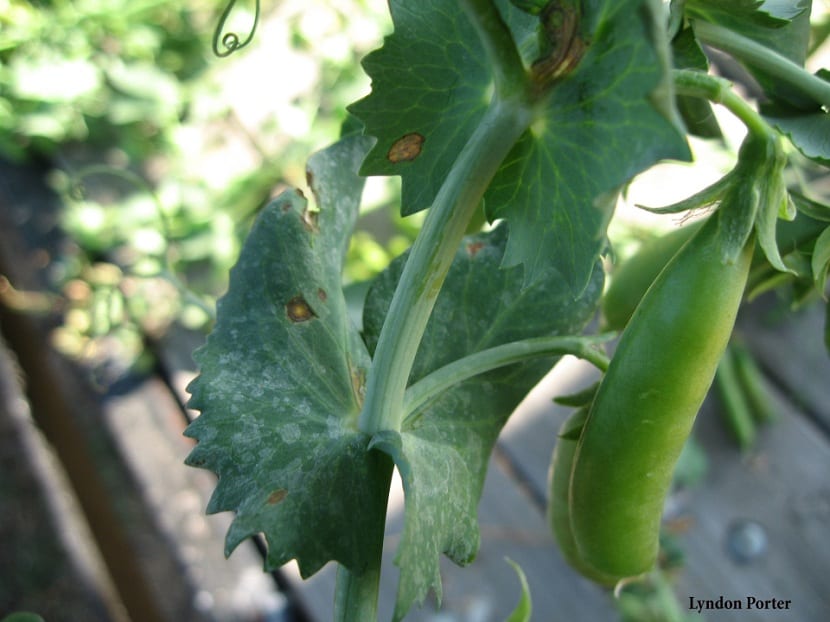
These are two diseases that are easily recognizable. They form some white powdery spots on the leaves and pods. It usually happens when the temperatures are very high, since it prefers cooler climates.
To avoid this disease, you have to take good care of the waterings and prevent the leaves from getting wet. If the leaves are excessively moist, they are more prone to white blight. To control the disease, the affected leaves must be removed as it spreads easily through the wind and can contaminate other plants.
Aphids
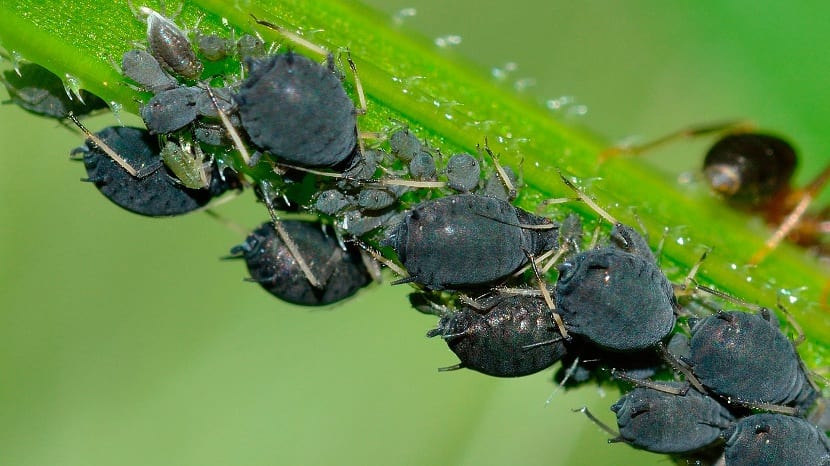
This pest mainly feeds on the sap of the plant and cause disease. If it is not protected or cared for in time, we can lose the plant. We can wash the leaves with biodegradable soap and water to eliminate these insects. Another solution is to use natural predators such as ladybugs that are attracted to the flowers in our garden.
Leaf miners

This pest forms galleries on the plant leaf. They are larvae that are taking away space from the plant to carry out photosynthesis. If we want to eliminate the pest, we have to squash the larvae on the leaf so they do not develop further. In the case in which they become infected, you can also use some type of pesticide.
With these tips you can have your peas healthy and prevent them from being affected by possible pests and diseases.